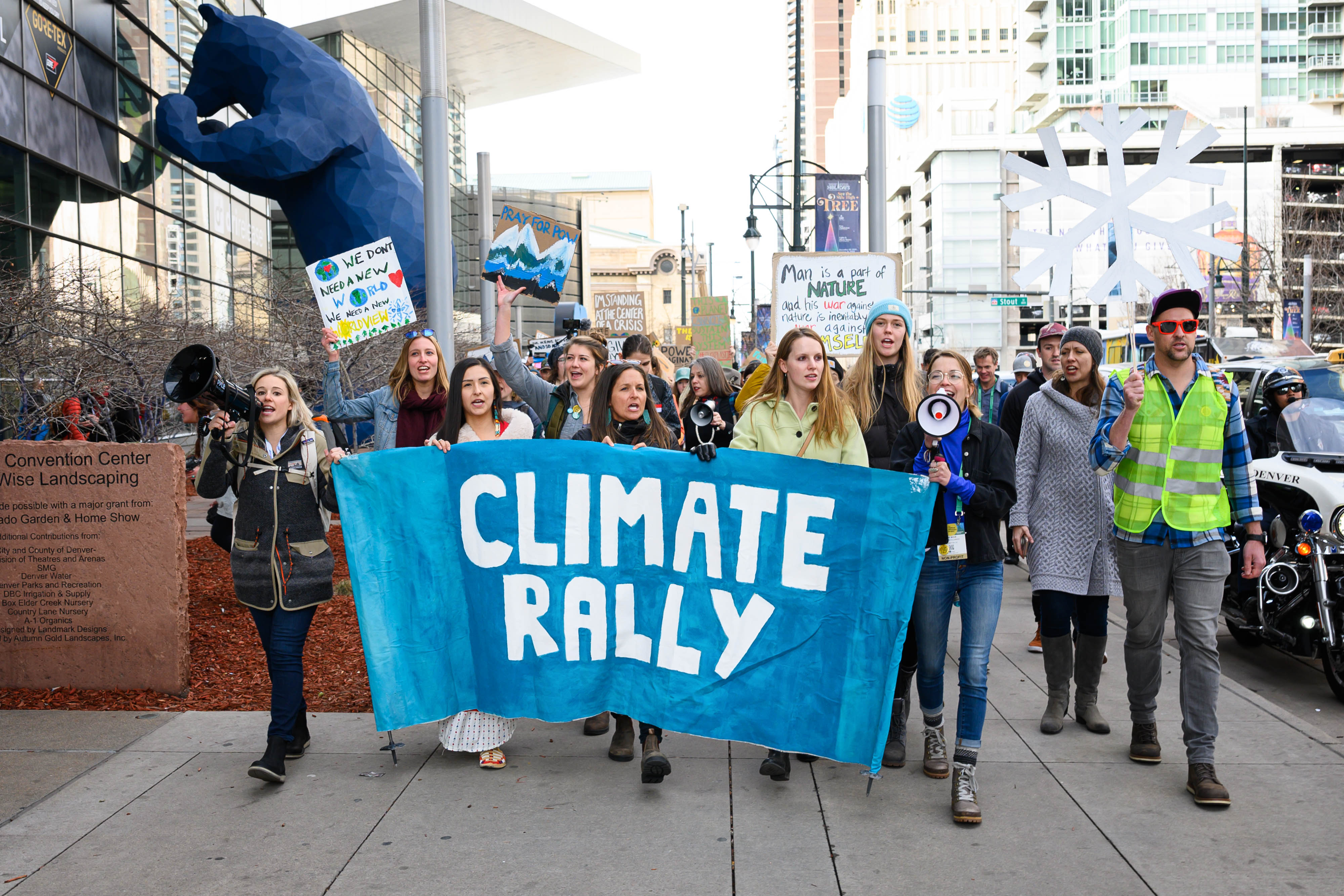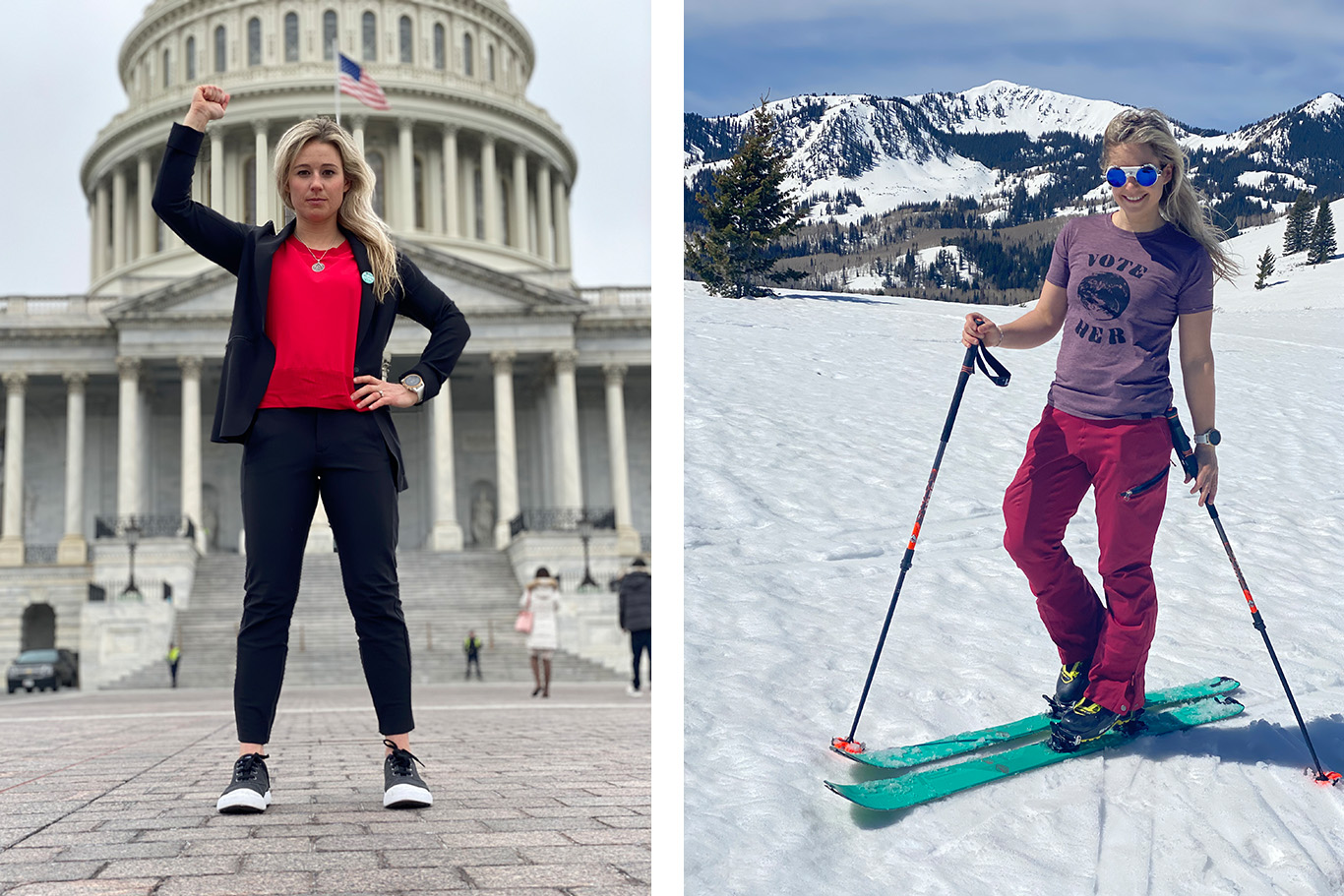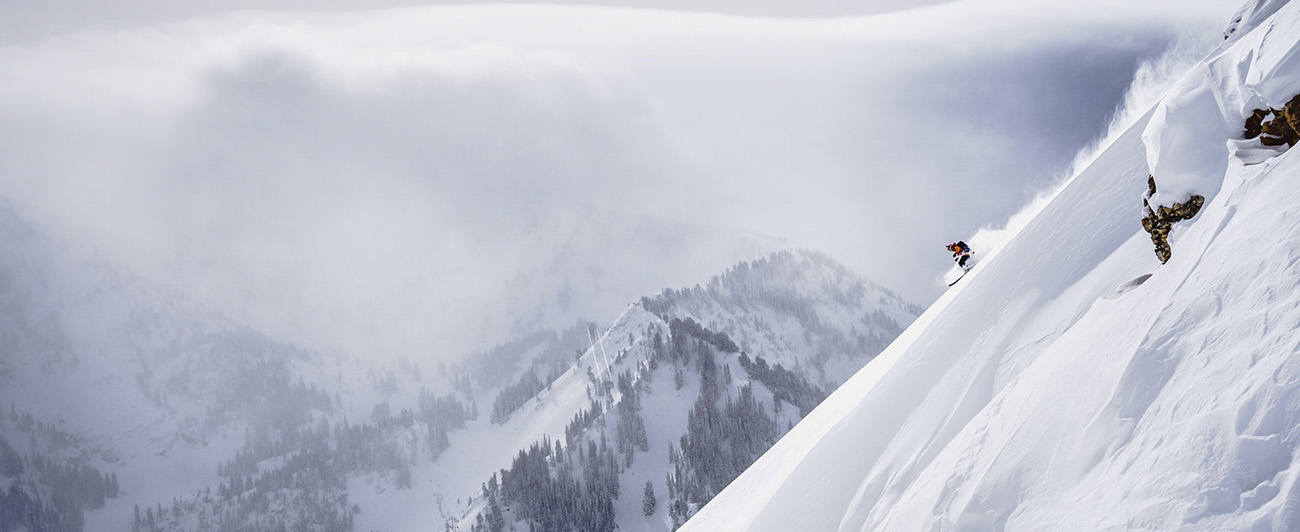Interview
Caroline Gleich Talks Adventure and Activism
An interview with the Wasatch local redefining the role of women in the outdoors, and pushing for legislative action on climate change
The last few years have been big for Caroline Gleich. In 2017, she finished her five-year project of becoming the first woman to ski all 90 lines in The Chuting Gallery, Andrew McLean’s famous guidebook of the steepest lines in the Wasatch.
Since then, she’s turned her focus to projects both beyond, and inherently tied to, the mountains, like defeating the sexism within the outdoor industry, and working to fight the effects of climate change. The latter of which led to two trips to Washington D.C., during which she testified to both the Senate and the House of Representatives on the issue of climate. She has even started a podcast, “The Caroline Gleich Show,” where she tackles issues relating to outdoor adventure and climate change, among others.
But the 34-year-old hasn’t shied away from pushing her limits in the mountains. Last year, she successfully summited Mount Everest with her husband, Rob Lea—with a torn ACL no less. And, until going into quarantine, she continued to ski big lines near her home in Park City, UT while rehabbing from ACL surgery.
I had the chance to talk with Caroline on the phone to see how she’s been keeping up the fight against climate change from home and preparing for a future of adventures as stay-at-home restrictions ease across the country.
This interview has been edited for length and clarity.
The Ski Journal: The last couple of months have been strange for all of us. What has it been like staying around home?
Caroline Gleich: In Utah, our Governor was always encouraging people to get outside to recreate, so we’ve been able to stay pretty active. I always love exploring the Wasatch, my home mountain range, so it’s been nice to revisit that and just dial things back a little bit. In some ways, it’s been a nice change of pace.
What have you been doing and thinking to keep the fight against climate change at the front of peoples’ minds when the coronavirus seems to be all-consuming?
That is one of my big worries. I’m working on an op-ed right now about all the different environmental rollbacks during this time. While we’ve been distracted, our government is undoing these landmark things that protect our air and water. I’ve started a podcast that really takes a much deeper dive into climate and other topics like activism.
I’ve also been working with Strava—I started an Athlete Activist Club to try to inspire and educate athletes to use their platforms to create change. I’m taking lessons from my decade-plus of experience being a climate and environmental activist, and I’m translating that into lessons and takeaways for other people.

ABOVE Gleich, far left, is a constant presence in the fight to end climate change at the local, and national, level. Photo: Caroline Kaestner
It seems like we’ve been able to make big sacrifices as a culture to effect change during this pandemic. Do you think it’s possible to make similar efforts to slow down the effects of climate change?
Absolutely. But it’s a complicated question, because while individual action is important and we want to encourage everyone to do as much as possible, 71% of carbon emissions come from 100 companies. So, even if you and I go to great lengths to cut our carbon footprint in half at a great personal expense to us, that still isn’t going to be enough.
So yes, it’s been really cool to see people planting home gardens, riding bikes, and living a simpler kind of life, but at the same time we want to make sure we keep the focus on the big picture. Individual action is wonderful—and for everyone out there, whatever individual actions you’re taking, please continue doing them—however, it’s not enough, so we need to make sure we keep the pressure on the big corporations and government. Climate change is a structural issue, so we need structural change.
This might be obvious, but why should we as skiers care about this issue, and what can we do to combat it?
On the surface level, the obvious answer is to protect our passion and our recreation, but I think my ideas about why we should care about climate have really changed in the last few years. If you are a skier, then you most likely come from a place of incredible privilege. And with that privilege, we have the responsibility to protect and take care of the most vulnerable people in the world. Mountain communities are probably going to be okay. We have money, and we have resources to adapt. But marginalized populations with lower socioeconomic status lack the same resources to adapt that we do as skiers. For the reasons that we’re staying inside now to protect the elderly and to protect the most vulnerable, those are the same reasons we should care about climate.
And the other part I’d add is for public health—you and I could go to great lengths to cut our carbon footprints in half, but what does that do to help people who live next to coal burning power plants that are suffering really high rates of asthma and other respiratory problems because of their proximity to poor air quality? What does us taking action do for them? That’s the reason that we also really need to advocate for elected officials who will enact renewable energy goals, because we need to do more to take care of our health and the health of the people who are most impacted by the burning of fossil fuels and climate change.
Have you used this time to plan your next big ski project?
For me, it’s been a good time to revisit a lot of cool local things that I’ve done in the years past, so that’s been pretty fun. But with it being unclear when we’ll be able to travel internationally again, I’ve been hesitant to put resources into planning any big trips. Instead, I’ve been thinking of more local and drive-to adventures in neighboring mountain ranges.

ABOVE Gleich splits time between her two biggest passions: activism and the mountains. Photos: (left) Ian Glass, (right) Rob Lea
Utah is a good place for that.
There are so many different things to explore, and we’re really close to a lot of other outdoor recreation in just a few hours’ drive. The desert, the Tetons—everything is a stone’s throw. It’s a good state for being active every day. The weather is nice here. The snow quality is pretty amazing. And if you’re an environmental activist, it gives you a lot of challenges. There’s always something to be working on here.
Has it been difficult to get back into skiing shape after your ACL surgery? How have you coped with that?
Skiing hasn’t been too hard. I was able to start skiing pretty soon after my surgery, and for me backcountry skiing, going uphill, is pretty low impact. Between coronavirus and a knee injury, there’s sort of this feeling of loss of identity. These questions of who am I? when so much of your identity is based on athletic performance and athletic goals.
I know the strength will come back, and I’m not even a year out of surgery. So, I just try to be really happy that I was still able to go to Everest, and be able to ski and film this winter. I trust that the strength will get back to 100%, and more. I’ll be stronger in the end because of it. I try to keep my eyes on the long-term.
Given all your accomplishments, of which are you the proudest?
I feel like I still haven’t done my biggest thing yet. I’m probably most proud that in the last year, I was able to go to D.C. twice to testify to the Senate and to the House Natural Resources Committee about climate change. I’m proud, because to have my work, my words, my research, and my story be part of the Library of Congress, that’s a big deal to me. The Chuting Gallery was a cool project, and climbing and skiing Cho Oyu and Everest, those were cool projects. But, more than any mountain, I want my legacy to be as someone that inspires other athletes—and everybody really—to use their voice to affect change and make the world a better place.
